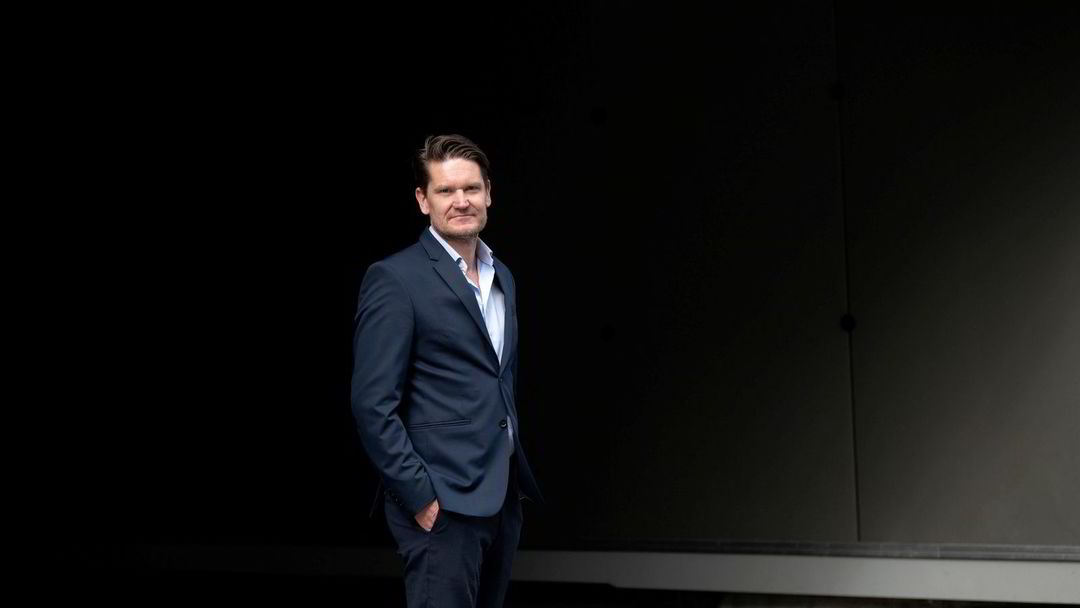The US central bank sets the main interest rate by 0.5 percentage points, so that the new interest rate is in the range of 4.25 to 4.5 percent. This is the highest since December 2007, before the financial crisis and the interest rate cuts it brought about.
It is the seventh consecutive interest rate increase this year, and follows four interest rate increases of 0.75 percentage points in a row.
Up front, there was high expectation of a rate hike of just 0.5 percentage point, and the tension was directed toward publishing “Dot Plots” – a type of interest rate track based on what Fed members think about future rates – the Fed chair said. Jerome Powell at the press conference afterwards.

US central bank chief Jerome Powell had announced six interest rate hikes in 2022 ahead of Wednesday’s rate announcement. (Photo: Patrick Simanski/The Associated Press)
The big question is what the Fed will do at the next fork in the road, how high the interest rate will be, and how long it will stay there, before the US central bank turns around.
Dot Plots thus shows that Fed members now expect an interest rate peak of 5.1 percent at the end of 2023, up from an estimate of 4.6 percent in September. The point charts also indicate that the Fed will not cut interest rates until 2024.
– My impression is that this is a hawkish Fed, which raises interest rates by half a percentage point, says Kjetil Olsen, chief economist at Nordea.
No imminent interest rate cuts
Kjetil Olsen goes on to point out that interest rate cuts have been priced in, and he thinks it appears the market “doesn’t have particular confidence in this outlook.”
This is a signal to the market that there are no imminent interest rate cuts. They are trying to get the market to understand that interest rates are not going down.
The Central Bank also increased its expectations for long-term interest rates, so that at the end of 2025 they range between 2.4 percent and 5.6 percent in 2025.
— The central bank is showing strength and will to do what is needed to bring inflation down to the 2 percent target, Sparebank 1’s chief state economist Elisbeth Holweck reported in a market update.
Shortly after the interest rate decision, the interest rate on 10-year US government bonds rose from three to four basis points, but has eased somewhat since then. The two-year benchmark, which is more sensitive to interest rate news, rose five basis points.
In recent weeks, long-term interest rates have fallen precipitously, in part because some believe that inflation will fall faster than previously thought, possibly due to next year’s recession.
Track the increase in unemployment at the level of recession
The drop in long-term interest rates is working against the Fed’s hawkish target as it tries to slow the US economy into a “soft landing”. It is these interest rates that affect the economy, among other things by increasing borrowing costs.
– Long-term interest rates and the dollar have fallen in the past month, while stocks have risen, and this is not the development that the Federal Reserve wants, Olsen says, before calling it a “tug of war” between the Fed and the market.
In the economic projections released in connection with the rate announcement, Fed members seem to envision an unemployment rate of 4.6 percent next year, compared to 3.7 in November and is just now.
The Wall Street Journal Historically, he writes, this large increase coincides with a recession.
The lowest core inflation rate in over a year
The rise in interest rates in the United States over the past six months is the strongest in more than 40 years and, as is known, comes in response to rising inflation, which appears to have peaked year-on-year at 10.1 percent in June.
Since then, it has gradually eased, and earlier this week it became clear that inflation in November ended at 7.1 percent. The inflation figure came in somewhat lower than expected, as well October And the September.
Knut Magnussen, chief economist at DNB Markets, believes that Tuesday’s inflation figures did not have a “decisive weight” in the interest rate decision.
– The past two months indicate a declining trend in inflation, so a slower pace is clearly justified, says Knut Magnussen, chief economist at DNB Markets.
The same trend applies to core inflation, which ended at 6.0 percent in November, down from 6.3 percent in October. Moreover, core inflation in the past three months was apparently 4.3 percent, converted to an annual rate – the lowest in more than a year, according to The Wall Street Journal.
In calculating core inflation in the United States, food and energy prices, which usually fluctuate more, are excluded.
Prices jump at low interest rates
The inflation figures released on Tuesday this week put the market ahead of the interest rate decision pricing in a 56 percent probability of a just 0.25 percentage point increase in the interest rate at the next rate meeting in February next year — versus a 35 percent probability yesterday.
Although inflation has fallen, it is still well above the 2 percent target – and US central bank chief Jerome Powell has emphasized several times that the Fed is not done tightening until the US central bank is sure that price growth will fall back to above. mention it. 2% on an annual basis.
Repeat this on Wednesday.
The inflation figures we have received so far for October and November show a welcome decrease in the monthly growth rate of price inflation. But Powell said that much more evidence is needed to be confident that inflation is on the way down.
– When it comes to inflation expectations, they have somewhat adjusted themselves for the end of next year and believe that it will take longer to bring inflation down, Magnussen comments.
They also emphasized the importance of reducing price inflation. The problem of inflation has not yet gone away, although it has decreased somewhat, says Magnussen, before summarizing it:
I don’t think the Fed is going to say it fixed the problem.(Conditions)Copyright Dagens Næringsliv AS and/or our suppliers. We’d like you to share our statuses using links that lead directly to our pages. Reproduction or other use of all or part of the Content may be made only with written permission or as permitted by law. For additional terms look here.

“Explorer. Unapologetic entrepreneur. Alcohol fanatic. Certified writer. Wannabe tv evangelist. Twitter fanatic. Student. Web scholar. Travel buff.”




